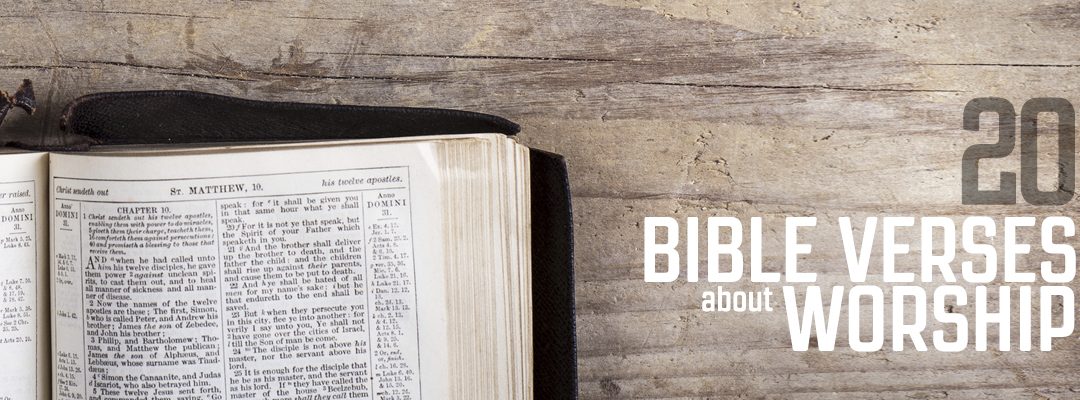Most church worship teams are made up of people with different skill levels. While it’s important to allow opportunities for everyone to use their gifts, worships teams can feel hampered by musicians who don’t understand basic theory or how to play in an ensemble.
For everyone interested in becoming a stronger unit, here are five things you can learn to make you a better musician and team player.
1. Listen more, play less
Worship leader Brian Doerksen talks about the Fraction Principle. This principle basically states that with every additional musician on stage, everyone should play a fraction of what they might play on their own. If there are five people on stage, everyone should be playing a fifth of what they would alone.
Nothing sounds more disastrous than a bunch of performers bashing away on stage completely oblivious to what everyone else is doing. All the vocalists are singing the whole time, the keyboardist is playing eight-finger chords, and the drummer’s constantly playing fills.
A strong worship team requires that all of the various parts add up to one cohesive unit. But this can only happen when everyone is listening to what others are doing and finding ways to augment it.
2. The frequency spectrum rules
Think about the range of a standard-sized keyboard. Between the lowest to highest A notes, it covers eight octaves. Guitars and vocals all sit in the middle of that range. It even encompasses the range of a five-string bass—the lowest A on a piano is a whole note lower than the low B on the bass. That means that there’s potential for overlap between all the instruments—especially those right in the middle of that range.
If the piano is doing a lot of left-hand work, it conflicts with the bass. If the acoustic guitar is strumming open cowboy chords while the piano and electric are playing in the same range, it comes out sounding to the audience like a big, indecipherable blob of sound.
A good worship team is aware of the need to make room for everything to sit nicely in the mix. If the guitar is taking up the middle of the spectrum, the piano should add some shimmer up top and allow leave room for the vocals and guitar. If the piano is playing the middle range, the guitars should capo up and add some top end.

FREE SUNDAY CHECKLIST
FREE for your Church Presentation Software needs: We’ve put together an easy-to-follow, downloadable, Sunday morning service checklist for your ministry. The best part: It’s FREE! Download today.
3. Basic music theory is important
In an ideal world, if the worship leader decides to transpose a song to another key, she shouldn’t have to run out to print up all new song sheets—especially if she’s only going up or down a whole step. Knowing how to transpose from one key to another is music theory 101.
Other basic things you should be able to understand:
- What a time signature is
- How major and minor scales are constructed
- How chords are constructed from scales
Once you begin to understand these elements of theory, you won’t believe how liberating it is. The whole thing is a snowball. Once you understand a diatonic scale, it’s so much easier to understand chords. And it keeps going from there. I promise that the more you learn, the more fun it is to play music.
4. Practice, practice, practice
Improving and applying theory requires effort. If you’re not going to practice, you’ll never get any better. And by “practicing,” I don’t mean running through songs.
If you want to learn a language, you can’t learn a bunch of phrases like: “Where’s the bathroom?” or “How much does this cost?” That will only help you in very few instances, but it won’t help you express yourself in that language. It’s the same thing with music practice. By practicing songs, you learn songs. By practicing the “boring” stuff like scales and chords, you create a vocabulary that helps you express yourself.
If you’re a guitarist, learn your scales and chords all over the neck. If someone tell you that they want to insert a Gmaj7, understand how that’s different than a G7.
5. You need to listen to other teams
This is the discipline that’s going to tie these other practices together. Really listening to other worship bands and how much (or how little) each member plays will give you a better understanding of how good parts are arranged. On top of that, you’ll get a better appreciation for how everyone compensates for each other’s place in the sonic spectrum.
A lot of keyboardists get worship folios where the instrumental parts of the entire team are condensed into one piano piece. This means they get used to these complex and full arrangements. When they begin to listen to piano players in worship teams, they’re blown away at how little they’re playing on the same songs.
It’s the same with guitarists. Most guitarists are used to are used to bashing away at home on chords. When someone on the worship team tells them to play less they’re surprised (and sometimes offended). Then they really listen to a worship team and realize that the guitarist is playing their chords on the 2 and the 4, or only on the upbeats.
What tips do you have?
See any tips we missed for creating a more cohesive worship team? Let us know in the comments!

Ready to switch to the best worship software on the market? See what MediaShout church presentation software can do for you and your ministry. Download the FREE 30-day trial today!














Pray together at every service or practice
John – We couldn’t agree more. Of course, this article is more on the musical side of worship, but you can not neglect the spiritual side. Praying together is one of the ways we do this. Additionally, at our church, we will sometimes break up rehearsal (especially if it is songs we all know) and spend time doing communion together instead of rehearsal. We also enjoy spending time together away from church as community. It is important to do this as a Worship Leader and a Tech Leader. One of the things that I’m very intentional about is spending time with my team. I will take them out to lunch after church to chat and talk about life. It is a vital part of what we do to build and encourage each other. Thanks for sharing!
Jayson, I’ve seen some great material on this subject but I wanted to say this is an extremely helpful and well put together list covering some angles I haven’t previously seen or considered. Thanks!
Thanks Eric! You’re so encouraging!
Really helpful, thanks. I play the flute in my worship band but rarely find much about non-guitar and keyboard playing musicians. Can anyone direct me towards any good sites?
Something I found has been fundamental to the several worship bands I have led is “freedom within a framework”. That allows for a structure to be set in place and also freedom of expression and worship within that structure. This helped all the members come together and express themselves in worship.
We use all in-ear monitors, but only started using a click track or metronome about 3-4 years ago. Best decision ever to tighten up our band. It wasn’t popular at first, but we all soon had to admit it worked to keep us from speeding up, which is almost a problem playing live.